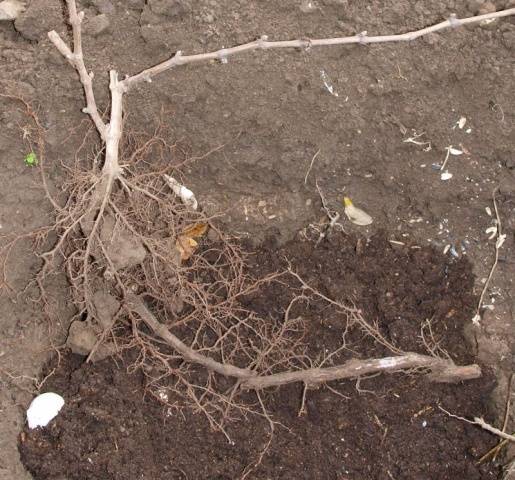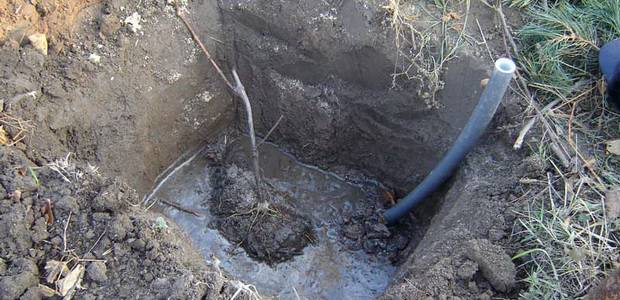Content
Difficult to find V garden berry, more useful than grapes. If you don’t like it, urgently change your attitude and eat 10-15 large berries a day during the season. This is enough to prolong youth, strengthen the heart, cleanse the kidneys and gallbladder. Grapes also help restore strength and improve the condition of the bronchi and lungs. But know that the sweet berry is contraindicated for diabetics and people with a diseased pancreas.
Growing grapes is not easy work. You can’t just plant it in the ground, water and feed it from time to time, and at the end of summer collect the promised 30 kg of berries from the bush. The best grapes grow in France and the Caucasus, where their cultivation is considered an art. Let's at least try to get closer to their high standards. The topic of our article will be replanting grapes in the fall.
Grape requirements for planting site
A vineyard can be planted on any soil except saline, swampy or with groundwater less than one and a half meters deep. True, there is a way to cultivate even completely unsuitable lands.
The best place for planting grape bushes on a flat area is a southern or southwestern slope, on a flat area - an unshaded area. Place late varieties near the southern walls of buildings, retreating 1-1.5 m from them. If you are planting a large vineyard, then the rows should be correctly positioned from north to south; when planting in one row, you can choose any direction.
Well-groomed grape bushes are beautiful in themselves; if there is not enough space on the site, they can be placed along paths, on decorative supports, or to plant greenery in a gazebo. Since the best place for planting in the ground is a well-lit place, take care that the fruit trees do not shade the vine. Place berry bushes or vegetable crops between the garden and the vineyard.
Grape planting time
One of the most discussed issues is when is the best time to replant grapes. There is simply no clear answer to this. There are supporters of both autumn and spring planting; they provide a lot of convincing arguments and examples from practice to confirm that they are right.
Let's look at this issue from the point of view of the physiology of the grape bush. Its roots do not have a dormant period and in a warm, moist, nutritious environment they can grow all year round. While we can easily regulate the water regime and fertilizing, we cannot influence the soil temperature in any way. Grape roots have two peaks of development - spring, after the soil warms up by more than 8 degrees, and autumn, when the growth processes of the above-ground part stop and the soil is still warm.
Spring planting of grapes
You can often come across the erroneous statement that grapes should be replanted in the spring as early as possible. It is not right. In spring, the air warms up faster than the soil, the above-ground part wakes up, and the buds open. Having used up the supply of nutrients from the cuttings, they dry out or begin to draw the juices needed by the transplanted plant from the roots.
Grape bushes need to be replanted when the soil warms up to the required 8 degrees, which in most regions does not happen earlier than mid-spring, namely late April - early May. Or create suitable conditions for their survival. And they consist in either warming the soil well to at least 8 degrees, or slowing down the awakening of the vine.
Experienced winegrowers do this: before starting work, they spill the planting hole with hot water, which warms the soil, and, on the contrary, after planting in a new place, the vine is covered with a mound of soil about 5 cm high. This shifts the time of awakening, on the one hand, inhibiting the germination of the above-ground part , and on the other hand, stimulating the roots.
Autumn planting of grapes
The situation is different in the fall. First, the vine freezes, then the top layer of soil quickly cools, then, slowly, the bottom layer. When replanting grapes in the fall, you need to not miss the moment when the leaves have fallen, but the soil is still warm and the roots will take root well. In most regions, the best time is September–October.
How to replant grapes in the fall
Mature grapes transplanted in the fall will produce a full harvest in two years. If next year the bush tries to bloom in a new place, tear off all the brushes as early as possible. Next season it is correct to leave only a third of the inflorescences.
A grape bush is considered mature from the age of seven. After this, it is not replanted, since even a younger disturbed plant takes several years to restore its roots.
Preparation of planting holes
We have already said how to place grapes, we will add that the distance between the bushes should be at least 2 m, and between the rows - 2.5 m. Depending on the age and method of digging the plant, holes are prepared with dimensions of 60x60, 80x80 or 100x100 cm, depth they should range from 60 cm to 80 cm.
A hole of the required size is dug, a soil mixture is prepared, and it is filled halfway with it. The hole is filled with water, then the soil containing fertilizer is added so that about 40 cm remains to the edge and is moistened again.
The soil mixture is prepared from black soil and humus in a ratio of 10:4, then add fertilizers:
Planting pit size, cm | Double superphosphate, kg | Potassium sulfate, kg | Wood ash, kg |
|---|---|---|---|
60x60x60 | 0,1-0,2 | 0,1-0,15 | 1-1,5 |
80x80x60 | 0,2-0,25 | 0,15-0,2 | 1,5-2 |
100x100x80 | 0,3-0,4 | 0,2-0,25 | 2-2,5 |
Planting pit for planting grapes will be 1/3 or half filled with soil. This is right. It should also sit for a month.
Digging up bushes
Have a shovel and sharp pruning shears ready before replanting your grapes in the fall.
Grape bushes with a lump of earth
Grape bushes up to 3 years old are usually replanted in this way. Its main advantage is that the roots are minimally damaged, and if planted correctly, fruiting can occur as early as next year. Older grape bushes are rarely replanted with an earthen ball simply because it is very difficult to do so.
- Stop watering a few days before the intended replanting so that the soil dries out and the earthen ball does not collapse.
- Trim the grapevine with pruning shears, leaving 2 sleeves on the bush, and 2 shoots on them, treat the wound surface with garden varnish.
- Step back 50 cm from the base of the bush and carefully dig up the grapes.
- Trim the lower roots of the grapes with pruning shears, place the earthen ball on a tarpaulin and move it to a new place.
- You can start transplanting.
With partially exposed roots
Frankly speaking, such a transplant of bushes usually begins like the previous one, and it would be correct to call it “failed with an earthen lump.” Failure is due to the fact that the wet soil crumbled or the roots of the grapes grew more than you expected and it was not possible to dig them out without damaging them.
- Trim the vine, leaving 2 to 4 sleeves with 2 shoots on each, lubricate the damaged areas with garden varnish.
- Dig up the bush, being careful not to damage the roots, retreating at least 50 cm.
- Separate the grapes from the soil by trimming the old roots.
- Move the bush to the fall planting site.
With completely bare roots
Typically, mature bushes with a good root system are dug up this way.
- Cut off the above-ground part, leaving 2 sleeves and 2 shoots on each, treat the cuts with garden varnish.
- Dig up the grape bush so as not to injure the underground trunk, heel and minimally damage the roots.
- Lifting the plant, free the underground part from excess soil. This is best done by lightly tapping the soil with a wooden stick or the handle of a shovel. Do not hurry.
- Using a clean pruning shears, remove old and damaged grape roots, treating the cuts with garden varnish. Shorten the rest to 25-30 cm.
- Cut out the dew roots (thin, located directly under the head of the bush) completely.
- Prepare the mash: combine 2 parts clay, 1 part mullein and dilute with water to the consistency of thick sour cream. Soak the grape roots in it for a few minutes.
Pre-landing preparation
The shoots of the grapes dug up in our own plot need to be shortened, leaving 4 buds on each. If you do not replant the bushes immediately after digging, inspect the exposed root system and renew the tips. It happens that for some reason the grape seedling turns out to be dried out. Postpone planting and soak the root for 2-3 days in rainwater with the addition of a stimulant, for example, heteroauxin, epin or root.
Planting grapes
We have a hole with a lower layer of soil ready for transplanting an adult grape bush.
- Make a planting mixture of black soil, sand and humus (10:3:2). We have already applied all the fertilizers; they are in the lower half of the planting hole. When filling a grape bush with soil, we do not use them!
- Place a mound of planting mixture in the middle of the finished hole.
- Place your heel on it, and distribute the roots evenly along the sides of the elevation.
- Carefully fill half of the planting hole with soil.
- Fill the soil under the grapes with water and let it soak.
- Add soil so that the depth of the previous planting is 10 cm below the soil surface for bushes dug out with a ball of earth, 20 cm for grapes dug up in a different way.
- Water again.
Watch a video about replanting grape bushes:
Shelter of grapes
We will give you the simplest, but nevertheless very good way to cover grape bushes transplanted in the fall for the winter. Cut the neck off a large plastic bottle and simply slide it onto the vine. Place a mound of soil on top. For the southern regions, 8 cm will be enough, in the North-West - 15-20 cm. Be sure to mark the transplant sites so that they are easier to find in the spring. Be sure to water the grapes once a week, spending at least a bucket of water per bush.
Conclusion
Of course, grapes are a difficult crop to plant and care for. But when the bush takes root well and begins to bear fruit, you will not regret that you once worked hard. Have a rich harvest!




















